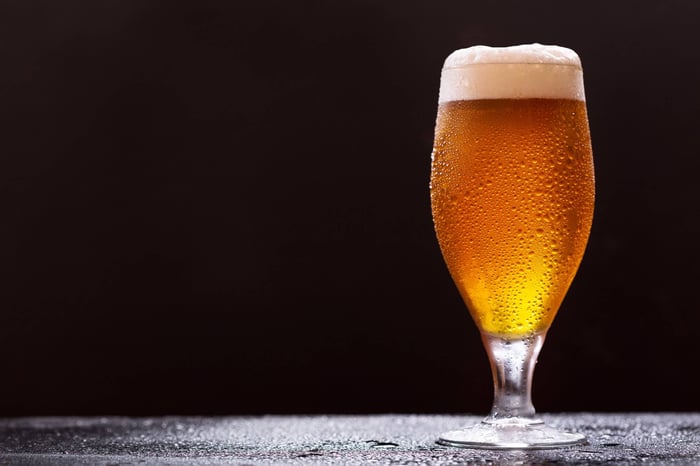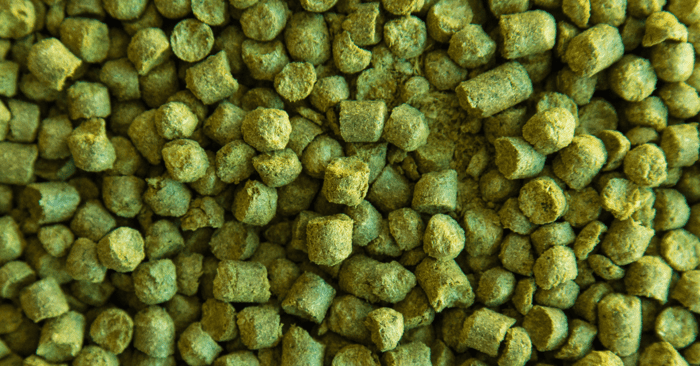We need to have an honest conversation about lagers. For too long, they've been dismissed as the boring cousins of the beer family – predictable, uninspiring, and frankly, a bit naff. But here's what we've learned after countless brew days: that supposed simplicity is actually their superpower.
When you ferment with lager yeast strains at those chilly temperatures (7-13°C), then condition them cold for weeks, something magical happens. All those fruity esters and spicy phenols that ale yeasts produce get dialled right back, creating a crystal-clear canvas that lets every single ingredient shine in its pure form. It's like the difference between a watercolour painting and a photograph – both beautiful, but lagers show you exactly what's there.
The Clean Slate Advantage
Fermentation Science Made Simple Lager yeasts work differently to ale yeasts. They're bottom-fermenting organisms that thrive in cold conditions that would send most ale yeasts into shock. This cold fermentation slows down metabolic processes, reducing ester production whilst giving the yeast plenty of time to clean up any harsh compounds during extended conditioning periods.
Why This Matters for Kiwi Brewers New Zealand produces some of the world's most distinctive brewing ingredients – Nelson Sauvin hops, Canterbury barley, South Island honey. Lager fermentation strips away yeast interference, letting these premium ingredients tell their own story without competition.
Light Lagers: Precision Brewing
Target: Under 4.5% ABV, maximum refreshment
Think of these as the ultimate session beers – designed for those scorching Central Otago summers or post-rugby refreshment. The challenge is creating interest within tight constraints.
Foundation Building
- Malt base: 65-75% premium New Zealand pilsner malt
- Adjunct strategy: Rice or corn (up to 40%) for that signature crispness
- Character additions: Small amounts of wheat malt (5-8%) for improved mouthfeel
Hops That Work Forget hop-forward thinking. In light lagers, hops should enhance drinkability rather than dominate. Try small amounts of Riwaka for subtle passion fruit undertones, or Pacific Jade for gentle citrus complexity. Keep IBUs low (8-12) but ensure enough bitterness for structure.
New Zealand Honey Integration Manuka honey (2-4% of fermentables) adds unique floral complexity that's distinctly Kiwi. The key is choosing honey that complements rather than overwhelms – rata honey provides gentle sweetness, whilst kamahi honey adds earthy undertones.
Experimentation Opportunity: Try parallel fermentations with different lager strains. SafLager W-34/70 versus S-23 can produce surprisingly different character profiles from identical grain bills.
Pale Lagers: The Perfect Balance
ABV Range: 4.5-6.0% – the sweet spot for everyday drinking
These styles give you room to showcase New Zealand's brewing heritage whilst maintaining that clean lager character. Think Steinlager meets modern craft innovation.
Advanced Malt Techniques Traditional step mashing creates complexity that specialty grains can't match. Try a protein rest at 50°C for 20 minutes, then ramp to 65°C for saccharification. This creates better head retention and subtle malt complexity.
Showcasing New Zealand Hops Single-hop pale lagers are educational and delicious. The clean fermentation profile means you're tasting pure hop character:
- Nelson Sauvin: White wine and gooseberry notes shine through
- Motueka: Lime and tropical fruit complexity
- Wakatu: Floral and citrus balance
Decoction Possibilities If you've got time, try a single decoction – pull 30% of the mash, boil for 15 minutes, then return to the main mash. The Maillard reactions create beautiful bread and caramel notes impossible to achieve through grain additions alone.
Local Twist Canterbury barley provides exceptional malt character when properly processed. Consider using 20-30% New Zealand pilsner malt alongside imported varieties for subtle terroir expression.
Dark Lagers: Seasonal Sophistication
Perfect for Otago winters and Canterbury autumns
Dark lagers coincide beautifully with New Zealand's cooler months, making them ideal for showcasing seasonal ingredients whilst maintaining clean, approachable character.
Complex Malt Orchestration
- Munich malt: 25-40% for rich, honeyed character
- Crystal additions: CaraRed or medium crystal (5-10%) for toffee complexity
- Roasted elements: Small amounts of chocolate malt for colour and subtle roasted notes
New Zealand Seasonal Ingredients
- Central Otago stone fruits: Dried apricots or peaches during secondary fermentation
- Native honey: Rewarewa honey for complex floral notes
- Beech leaf noyau: Traditional Kiwi botanical for unique character
Smoke Experiments New Zealand has excellent wood resources for smoking. Try small amounts (5-10%) of beech or manuka-smoked malt for distinctive local character. The clean lager fermentation won't compete with smoke flavours.
Advanced Additions: Cold-side fruit additions preserve delicate flavours whilst avoiding fermentation complications. Perfect for showcasing Central Otago fruit character.
High-Alcohol Lagers: Innovation Territory
6%+ ABV – where tradition meets Kiwi creativity
Strong lagers provide the alcohol backbone necessary for bold experimentation whilst maintaining lager cleanliness and drinkability.
Bock-Style Evolution Traditional bocks rely on Munich malt and extended conditioning. New Zealand variations might include:
- Extended lagering: Start at 2°C for three weeks, then drop to 0°C for month-long conditioning
- Local malt character: Different New Zealand malt suppliers provide unique flavour profiles
- Hop integration: Small amounts of Nelson Sauvin or Riwaka for subtle fruit complexity
India Pale Lager Innovation IPLs showcase New Zealand hops brilliantly. The clean lager fermentation lets hop character shine without yeast interference:
- Base recipe: 85% pilsner malt with light crystal additions (5-10%)
- Hop selection: Combination of Nelson Sauvin, Motueka, and Riwaka for complex tropical character
- Technique: Late additions and dry-hopping work perfectly with lager's clean backdrop
Barrel Ageing Opportunities New Zealand's growing whisky industry provides unique barrel opportunities:
- Thomson whisky barrels: Complex malt and spirit character
- Gin barrels: Botanical complexity from local distilleries
- Wine barrels: Pinot Noir or Sauvignon Blanc barrels for subtle fruit integration
Local Innovation Consider unique New Zealand additions:
- Horopito: Native pepper for subtle spice complexity
- Kawakawa: Traditional Māori botanical for unique character
- Native fruits: Feijoa or tamarillo for distinctive Kiwi flavours
Your Brewing Strategy
Build on solid foundations. Master traditional styles before pushing boundaries. Understanding how classics should taste helps you recognise when innovations enhance rather than detract.
Embrace seasonal brewing. New Zealand's climate suits lager brewing perfectly – use natural temperature variations during autumn and winter brewing to your advantage.
Document everything meticulously. Kiwi innovation requires careful record-keeping. That subtle improvement you notice might become your signature technique, but only if you can reproduce it.
Source locally when possible. New Zealand produces world-class brewing ingredients. Use them strategically to create distinctly Kiwi lagers that showcase our terroir.
The Grainfather Team









